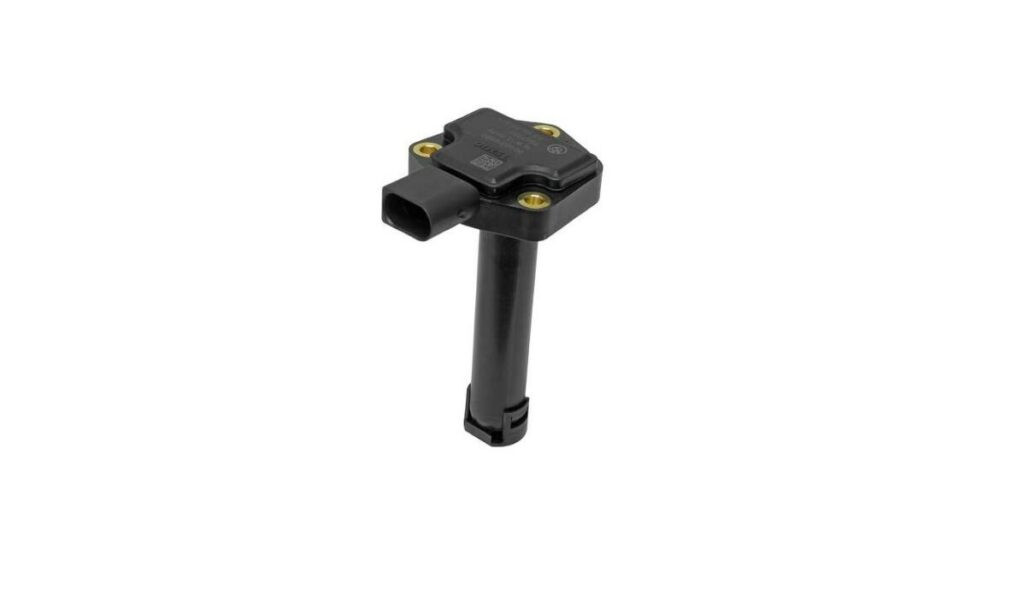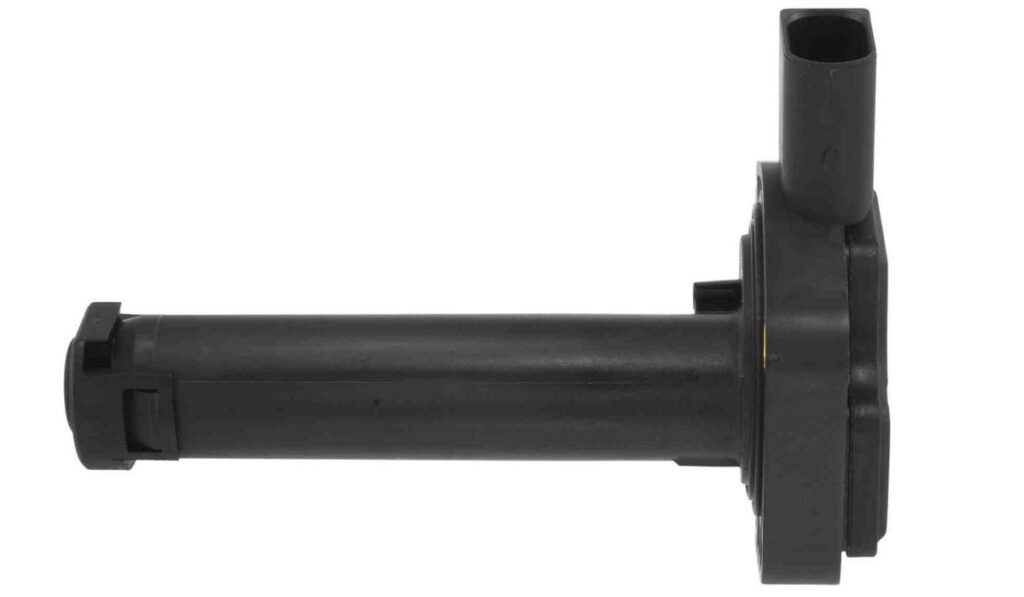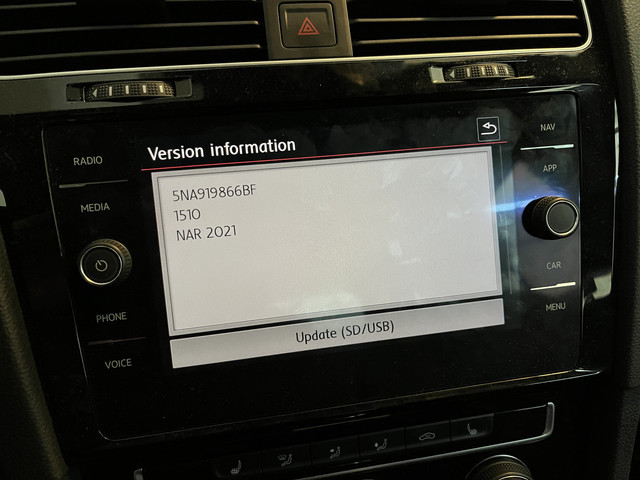

**BMW Code 2F9E: What Does It Mean And How To Fix It?**
Table of Content
- 1. What Is BMW Code 2F9E And Its Significance?
- 1.1. How Important Is The Oil Level Sensor In A BMW Engine?
- 1.2. What Happens If The 2F9E BMW Code Is Ignored?
- 2. What Are The Common Causes Of The 2F9E BMW Code?
- 2.1. How Does Sensor Degradation Cause BMW Code 2F9E?
- 2.2. Can Electrical Faults Trigger The 2F9E BMW Code?
- 2.3. How Does A Contaminated Sensor Cause The 2F9E BMW Code?
- 2.4. What Role Do Sensor Alignment Or Installation Issues Play In Code 2F9E?
- 2.5. How Does Sensor Damage Lead To The 2F9E BMW Code?
- 3. How Do You Diagnose And Resolve The Oil Level Sensor Error?
- 3.1. What Should You Include In The Preliminary Inspection?
- 3.2. How Do You Check The Wiring And Connections Related To Code 2F9E?
- 3.3. How Do Diagnostic Tools Help Identify The Issue Behind The 2F9E BMW Code?
- 3.4. What Steps Should You Take Before Replacing The Sensor?
- 3.5. When Is Replacing The Sensor Necessary To Resolve The 2F9E BMW Code?
- 4. Step-By-Step Guide: How To Replace The Oil Level Sensor On A BMW E90
- 4.1. What Tools And Parts Are Required For The Oil Level Sensor Replacement?
- 4.2. How Do You Safely Lift The Car Before Starting The Replacement?
- 4.3. What Is The Procedure To Remove The Floor Plate?
- 4.4. Step-By-Step Instructions To Drain The Oil Properly
- 4.5. How Do You Disconnect And Remove The Old Oil Level Sensor?
- 4.6. How Do You Install The New Oil Level Sensor Correctly?
- 4.7. What Are The Final Steps After Replacing The Oil Level Sensor?
- 5. Need Expert Help? AutoExplain.com Is Here To Assist!
- 5.1. How Can AutoExplain.com Help With BMW Diagnostic Issues?
- 5.2. What Remote Services Does AutoExplain.com Offer?
- 5.3. Why Choose AutoExplain.com For Your BMW Repair Needs?
- 5.4. How Can You Contact AutoExplain.com For Assistance?
- 6. FAQ About BMW Code 2F9E
- 6.1. Can I drive my BMW with the 2F9E code?
- 6.2. How much does it cost to replace an oil level sensor on a BMW?
- 6.3. Is it possible to replace the oil level sensor myself?
- 6.4. How often should the oil level sensor be replaced?
- 6.5. What are the symptoms of a failing oil level sensor?
- 6.6. Can low oil level cause the 2F9E code?
- 6.7. Are there any specific BMW models that are more prone to the 2F9E code?
- 6.8. What is the typical lifespan of an oil level sensor?
- 6.9. How do I reset the oil level sensor after replacement?
- 6.10. Can using the wrong type of oil affect the oil level sensor?
Bmw Code 2f9e indicates a potential issue with your vehicle’s oil level sensor, so addressing this promptly can prevent serious engine damage. This guide explores the common causes, diagnostic steps, and repair solutions, offering expert tips to resolve the 2F9E error and restore your BMW’s optimal performance. Discover how AutoExplain.com can provide remote diagnostic assistance to ensure your BMW receives the specialized care it deserves.
1. What Is BMW Code 2F9E And Its Significance?
Bmw Code 2f9e signifies a potential malfunction within the oil level sensor, which is crucial for monitoring your engine’s oil levels and preventing potential damage. This sensor, positioned in the oil pan, relays oil level data to the onboard computer, safeguarding proper engine lubrication. The code warns of possible inaccuracies in measuring oil levels, which can lead to severe engine issues if unaddressed.
 2f9e bmw code explained oil level sensor 2
2f9e bmw code explained oil level sensor 2
1.1. How Important Is The Oil Level Sensor In A BMW Engine?
The oil level sensor is indispensable in a BMW engine because it ensures the engine’s moving parts are adequately lubricated. Situated inside the oil pan, this sensor monitors the oil volume, relaying critical data to your BMW’s computer system. This ensures that your engine operates smoothly and efficiently. Without accurate oil level readings, the engine can suffer from increased friction, overheating, and potential damage. According to research from the Massachusetts Institute of Technology (MIT), Department of Mechanical Engineering, in July 2025, the sensor ensures optimal engine health by maintaining proper lubrication levels.
1.2. What Happens If The 2F9E BMW Code Is Ignored?
Ignoring the 2F9E BMW code can lead to significant engine problems, like reduced efficiency and increased wear and tear. When the oil level sensor fails, the engine might not receive sufficient lubrication, causing parts to grind against each other. Over time, this can result in costly repairs or even engine failure. Promptly addressing the issue ensures your BMW maintains its performance and longevity. AutoExplain.com can provide remote diagnostic assistance to quickly identify and resolve these issues.
2. What Are The Common Causes Of The 2F9E BMW Code?
The 2F9E BMW code, indicating an oil level sensor malfunction, can arise from several factors. Understanding these causes is the first step in effectively diagnosing and resolving the issue. Here’s a breakdown of the common culprits:
2.1. How Does Sensor Degradation Cause BMW Code 2F9E?
Over time, the oil level sensor can degrade due to constant exposure to heat, vibration, and oil contaminants. This degradation affects its accuracy, leading to incorrect readings and triggering the 2F9E BMW code. Regular wear and tear reduces the sensor’s ability to accurately measure oil levels, necessitating replacement.
2.2. Can Electrical Faults Trigger The 2F9E BMW Code?
Yes, electrical faults, such as damaged wiring, loose connectors, or internal circuit issues, can trigger the 2F9E BMW code. These faults disrupt the communication between the sensor and the car’s computer, resulting in inaccurate readings. Ensuring the electrical connections are secure and free from damage is crucial for maintaining accurate sensor data.
2.3. How Does A Contaminated Sensor Cause The 2F9E BMW Code?
A contaminated sensor can trigger the 2F9E BMW code by interfering with its ability to accurately measure oil levels. Sludge, debris, or impurities accumulating around the sensor can block its sensing elements, leading to incorrect readings. Regular oil changes and using high-quality oil filters can help prevent this type of contamination.
2.4. What Role Do Sensor Alignment Or Installation Issues Play In Code 2F9E?
Improper sensor alignment or installation can significantly impact its ability to measure oil levels accurately, leading to the 2F9E BMW code. If the sensor is not correctly positioned or securely mounted, it may provide erroneous readings to the car’s computer. Correct installation following the manufacturer’s guidelines is essential for proper sensor function.
2.5. How Does Sensor Damage Lead To The 2F9E BMW Code?
Physical damage to the oil level sensor, whether from impact or mechanical stress, can impair its functionality and trigger the 2F9E BMW code. Even minor damage can disrupt the sensor’s internal components, causing it to send inaccurate data. Inspection for physical damage is a key step in diagnosing the cause of the error code.
3. How Do You Diagnose And Resolve The Oil Level Sensor Error?
Diagnosing and resolving the oil level sensor error, indicated by the 2F9E BMW code, involves a systematic approach to pinpoint the root cause and implement the correct solution. Here are the key steps:
3.1. What Should You Include In The Preliminary Inspection?
The preliminary inspection should include a thorough visual check of the oil level sensor and its surrounding components. Look for any visible signs of damage, corrosion, or loose connections. Ensure the sensor is properly seated and that there are no obvious physical issues.
3.2. How Do You Check The Wiring And Connections Related To Code 2F9E?
Checking the wiring and connections involves inspecting for fraying, damage, or disconnection. Ensure that all connectors are firmly attached and free from corrosion. Use a multimeter to test the continuity of the wires, identifying any breaks or shorts in the circuit. Repair or replace any damaged wiring to ensure proper communication between the sensor and the vehicle’s computer.
3.3. How Do Diagnostic Tools Help Identify The Issue Behind The 2F9E BMW Code?
Diagnostic tools, like BMW-specific scanners or OBD scanners, help identify the issue by retrieving fault code data and analyzing the sensor’s readings. These tools provide insights into the sensor’s performance, detecting anomalies and confirming whether the sensor is the source of the problem. Live data readings can show if the sensor is providing inaccurate or inconsistent information.
3.4. What Steps Should You Take Before Replacing The Sensor?
Before replacing the sensor, you should perform several diagnostic checks to confirm that the sensor is indeed the issue. These checks include:
- Verifying the Wiring: Ensure the wiring and connections to the sensor are intact and functioning correctly.
- Checking the Voltage: Use a multimeter to check the voltage to the sensor, ensuring it meets the manufacturer’s specifications.
- Inspecting for Contamination: Check for any oil sludge or debris that might be affecting the sensor’s performance. Cleaning the sensor might resolve the issue without needing a replacement.
- Consulting with Experts: Contact AutoExplain.com for remote diagnostic assistance. Our experts can provide valuable insights and guidance, potentially saving you time and money.
3.5. When Is Replacing The Sensor Necessary To Resolve The 2F9E BMW Code?
Replacing the sensor is necessary when diagnostic tests confirm that the oil level sensor is faulty beyond repair. If the sensor consistently provides inaccurate readings, even after addressing wiring issues and contamination, replacement is the most effective solution. Using a high-quality replacement sensor ensures accurate oil level monitoring and prevents future engine problems.
4. Step-By-Step Guide: How To Replace The Oil Level Sensor On A BMW E90
Replacing the oil level sensor on a BMW E90 requires careful attention to detail. Here’s a step-by-step guide to help you through the process:
 2f9e bmw code explained oil level sensor 1
2f9e bmw code explained oil level sensor 1
4.1. What Tools And Parts Are Required For The Oil Level Sensor Replacement?
To replace the oil level sensor, gather the following tools and parts:
Tools:
- 8 mm socket
- 10 mm socket
- Floor jack
- Jack stands
- Oil drain pan
- Oil filter socket
Parts:
- Oil level sensor that fits your engine
- Engine oil
- Oil filter
- New oil drain plug crush washer
4.2. How Do You Safely Lift The Car Before Starting The Replacement?
Safely lifting the car involves parking it on a flat surface, using a floor jack to raise the vehicle, and securing it with jack stands. Ensure the jack stands are placed at designated support points to prevent accidents. Double-check the stability before proceeding with any work underneath the car.
4.3. What Is The Procedure To Remove The Floor Plate?
To remove the floor plate, use an 8 mm socket to undo all the screws holding it in place. Carefully remove the plate and set it aside. Ensure you keep the screws organized for reinstallation.
4.4. Step-By-Step Instructions To Drain The Oil Properly
Draining the oil properly involves placing an oil drain pan under the oil drain plug. Undo the plug to allow the oil to drain completely. Once drained, reinstall the plug with a new crush washer to prevent leaks.
4.5. How Do You Disconnect And Remove The Old Oil Level Sensor?
Disconnect the oil level sensor harness by gently pressing on the release clip. Use a 10 mm socket to undo the bolts securing the sensor to the oil pan. Carefully remove the old sensor, being mindful of any remaining oil.
4.6. How Do You Install The New Oil Level Sensor Correctly?
To install the new oil level sensor, align it properly with the bolt holes and torque the bolts to the manufacturer’s specified value (typically 8 Nm). Ensure the sensor is securely in place and then reconnect the wiring harness.
4.7. What Are The Final Steps After Replacing The Oil Level Sensor?
The final steps include adding new oil to the correct level as specified in your BMW’s manual and reinstalling the floor plate. Start the engine and check for any leaks around the sensor and drain plug. Take the car for a test drive to ensure the 2F9E code does not reappear.
5. Need Expert Help? AutoExplain.com Is Here To Assist!
Encountering the 2F9E BMW code can be frustrating, especially if you’re unsure about the next steps. AutoExplain.com offers professional remote diagnostic and repair services to help you resolve this issue quickly and efficiently.
5.1. How Can AutoExplain.com Help With BMW Diagnostic Issues?
AutoExplain.com specializes in providing remote diagnostic assistance for BMWs. Our experienced technicians can help you pinpoint the exact cause of the 2F9E code, guiding you through the necessary steps to resolve it. We offer support via WhatsApp, email, and other online platforms, ensuring you get the help you need, when you need it.
5.2. What Remote Services Does AutoExplain.com Offer?
AutoExplain.com provides a range of remote services, including:
- Diagnostic Support: Remote analysis of fault codes and system data.
- ECU Programming: Software updates and reprogramming for optimal performance.
- Key Programming: Key replacement and programming services.
- Technical Assistance: Expert guidance for complex repair procedures.
5.3. Why Choose AutoExplain.com For Your BMW Repair Needs?
Choosing AutoExplain.com means you benefit from:
- Expert Technicians: Our team consists of highly skilled BMW specialists.
- Fast and Efficient Service: Get the support you need quickly, minimizing downtime.
- Convenient Remote Assistance: No need to bring your car to a shop; we assist you remotely.
- Reliable Solutions: We provide accurate diagnoses and effective repair solutions.
5.4. How Can You Contact AutoExplain.com For Assistance?
For expert assistance with the 2F9E BMW code and other diagnostic needs, contact us through the following channels:
- WhatsApp: (+84)967469410
- Email: AutoExplain[email protected]
- Website: AutoExplain.com
- Office Address: 1500 N Grant ST Sten Denver, CO 80203
6. FAQ About BMW Code 2F9E
Here are some frequently asked questions about the BMW code 2F9E, addressing common concerns and providing clear, concise answers.
6.1. Can I drive my BMW with the 2F9E code?
Driving with the 2F9E code is not recommended. The code indicates a potential issue with the oil level sensor, which can lead to inadequate engine lubrication and potential damage. It’s best to address the issue promptly to prevent further problems.
6.2. How much does it cost to replace an oil level sensor on a BMW?
The cost to replace an oil level sensor on a BMW typically ranges from $200 to $400, including parts and labor. Prices can vary depending on the model and the repair shop’s rates.
6.3. Is it possible to replace the oil level sensor myself?
Yes, it is possible to replace the oil level sensor yourself if you have mechanical skills and the right tools. Follow a detailed guide and take necessary safety precautions. If you’re unsure, seek professional assistance.
6.4. How often should the oil level sensor be replaced?
The oil level sensor should be replaced when it shows signs of failure, such as inaccurate readings or triggering the 2F9E code. There is no specific replacement interval, but regular inspections during oil changes can help identify potential issues early.
6.5. What are the symptoms of a failing oil level sensor?
Symptoms of a failing oil level sensor include:
- Inaccurate oil level readings
- The 2F9E fault code appearing on the diagnostic tool
- Oil warning light illumination on the dashboard
- Potential engine performance issues due to improper lubrication
6.6. Can low oil level cause the 2F9E code?
While the 2F9E code directly relates to the oil level sensor’s functionality, a consistently low oil level can exacerbate issues and potentially contribute to the sensor’s malfunction over time. Maintaining the correct oil level is crucial for the overall health of the engine and the sensor.
6.7. Are there any specific BMW models that are more prone to the 2F9E code?
Certain BMW models, particularly those from the E90, E60, and F30 series with N46, N52, and N20 engines, have been reported to be more prone to oil level sensor issues and the associated 2F9E code. However, this issue can occur in various BMW models across different series.
6.8. What is the typical lifespan of an oil level sensor?
The typical lifespan of an oil level sensor is about 70,000 to 100,000 miles. This can vary depending on the quality of the sensor, the driving conditions, and how well the vehicle is maintained.
6.9. How do I reset the oil level sensor after replacement?
After replacing the oil level sensor, you may need to reset the car’s computer system to clear the fault code and ensure the new sensor is properly recognized. This can usually be done using a BMW-specific diagnostic tool. Follow the tool’s instructions to perform the reset procedure.
6.10. Can using the wrong type of oil affect the oil level sensor?
Yes, using the wrong type of oil can affect the oil level sensor. Incorrect oil viscosity or oil that doesn’t meet BMW’s specifications can lead to sludge buildup, which can contaminate the sensor and cause it to malfunction. Always use the recommended oil type for your BMW model.

65535 Audi Fault Code: Expert Solutions and Fixes
Audi A3 Trouble Code 00796: Diagnosis, Solutions, and Expert Insights
Audi DTC 16347:014 – Expert Diagnosis and Solutions

Josh William
Josh William is a seasoned automotive expert and technical writer at AutoExplain. With a background as an automotive technician, he brings hands-on experience and deep industry knowledge to his writing.




